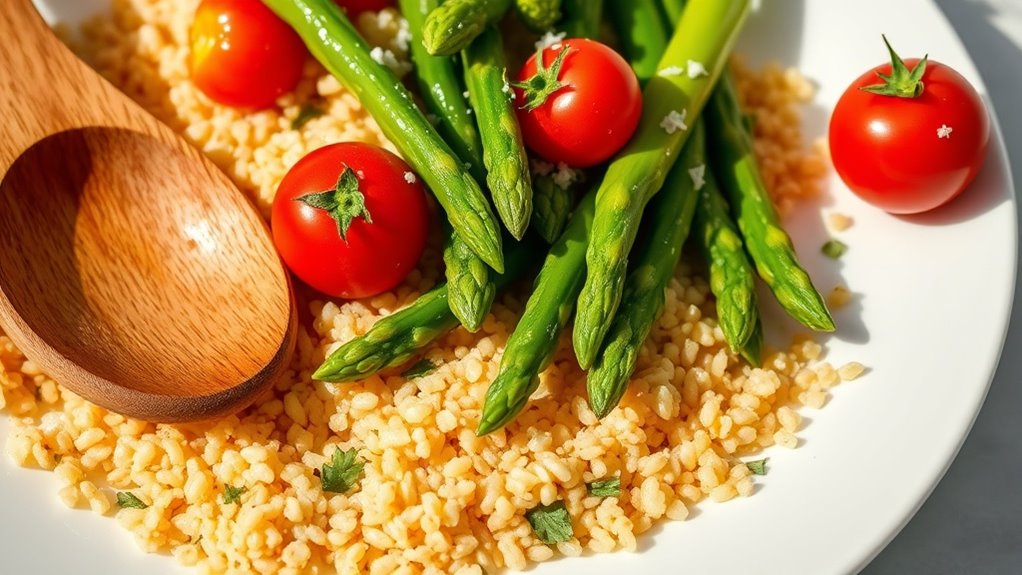Building the Perfect Meal Plate Just Got Easier
Did you know that over 70% of Americans struggle with meal planning and balanced nutrition? Building the perfect meal plate can seem daunting, but it doesn’t have to be. By understanding macronutrient ratios and incorporating a variety of colorful vegetables, you can create dishes that not only nourish your body but also please your palate. Discover how simple strategies can transform your meals into balanced, vibrant plates that support your health and energy needs.
Understanding Macronutrient Ratios
How do you determine the right balance of macronutrients for your meals?
Aim for a balanced plate by including carbohydrates, proteins, and fats in appropriate ratios. A common guideline is 40% carbs, 30% proteins, and 30% fats. Adjust based on your activity level and dietary needs. Tracking your meals can help ensure you’re hitting these ratios effectively for optimal nutrition. Whole foods can greatly enhance your nutrient intake, supporting both health and appearance.
The Importance of Colorful Vegetables
A balanced meal plate not only requires the right macronutrient ratios but also thrives on the vibrant colors of vegetables.
Colorful veggies provide a range of nutrients, antioxidants, and fiber that promote overall health. Incorporating red, orange, yellow, green, and purple vegetables can enhance your meals’ flavor and visual appeal. Aim for variety; this ensures you get a broad spectrum of essential vitamins and minerals. Incorporating nutrient-dense superfoods into your meals, such as avocados and leafy greens, can further enhance skin health and vitality.
Choosing Wholesome Ingredients
While planning your meal plate, choosing wholesome ingredients is crucial for maximizing nutrition and flavor.
Focus on these four options:
- Whole grains like quinoa or brown rice for fiber.
- Lean proteins such as chicken or beans for muscle support.
- Fresh fruits to add natural sweetness and vitamins.
- Healthy fats like avocados or olive oil for heart health.
Incorporating these will enhance your meals. Additionally, emphasizing nutrient-dense foods in your meals can significantly improve your overall wellbeing.
Portion Control Made Simple
Understanding portion control is essential for balanced eating and can help you avoid overeating.
Start by using smaller plates; they naturally encourage you to serve less.
Measure servings with your hand—protein should fit in your palm, carbs in your cupped hand, and veggies should cover your plate.
These simple techniques promote mindful eating and help you enjoy your meals without guilt.
Meal Prep Strategies for Success
Meal prepping can significantly enhance your journey towards balanced eating by helping you manage portions and ensure nutritious choices throughout the week.
Here are four strategies to make your meal prep successful:
-
Plan your meals for the week.
-
Choose versatile ingredients to mix and match.
-
Invest in quality containers for storage.
-
Set aside dedicated time for prepping each week, while aiming for a mix of macronutrients for optimal nutrition.
Tips for Customizing Your Plate
How can you create a plate that’s not only visually appealing but also packed with nutrients?
Start by using a variety of colors—aim for at least three—by including fruits, vegetables, and whole grains. Incorporate lean proteins, like chicken or beans, for balance.
Finally, don’t forget healthy fats—think avocado or nuts. This approach ensures you get essential nutrients while enjoying your meal. Additionally, including foods rich in high fiber content promotes digestive health and keeps you feeling full longer.

